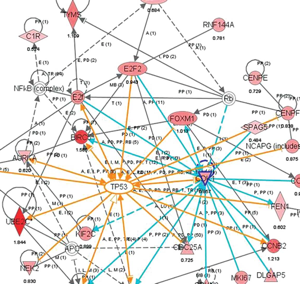Deliverabiltiy
March 2017: The Month in Email
It’s that time again… here’s a look at our last month of blog posts. We find it useful to recap each month, both to track trends and issues in email delivery and to provide a handy summary for those who aren’t following along breathlessly every single day. Let us know if you find it useful too!
As always, I wrote about email filters. It’s so important to recognize that filters aren’t arbitrary — they’re detailed instructions that help meet specific user needs, and the more you are cognizant of that, the better you’ll be able to work with them. Additionally, filters aren’t perfect and likely never will be. False positives and false negatives are frustrating, but as long as spam is still a viable business for spammers, they’ll continue to figure out how to work around filters. As such, we can’t expect filters to be 100% accurate in determining what constitutes wanted and unwanted mail.
Part of this, of course, is due to the problem of fraudulent signups. Companies aren’t particularly vigilant about address acquisition and hygiene, and as a result, they’ll claim you “signed up” for their email when you did not. Some people believe that a confirmed opt-in (COI) will solve this problem, but our experience is companies are reluctant to leave revenue on the table, and that they will continue to mail to addresses that have not confirmed.
Address sharing and co-reg is also part of the problem. As we saw in the extensive RCM data breach, many major brands continue to work with third-party senders to send mail in ways that are quite clearly spam. And in more criminal activity, I looked at the rise of botnets and how some of those criminals were brought to justice. In other justice news, there’s been an indictment in the Yahoo breach and another CASL enforcement action.
I wrote a post about bounce handling and “relaying denied” error messages, which are quite rare. It’s useful to have an understanding of these and other error messages, since bounces are sometimes indicative of a larger technical issue, such as when AOL accidentally bounced all messages for a short period last week. Speaking of AOL, we noted that there’s no official timeline for the move from Verizon addresses to AOL addresses following the 2015 acquisition, but it may be worth considering asking your customers to update their addresses.
Spam and filters aren’t the only factors of course. It can be challenging to figure out the multiple factors that make up the black box of delivery. And of course, the most important part of delivery continues to be engagement, engagement, engagement.
I wrote a few posts this month on why I do what I do, and why it’s so important to me. First, I wrote about A Day Without A Woman, and my choice not to participate in offering advice and guidance for that day. The truth is that I enjoy sharing what I know and helping people solve problems. I was honored to be named one of 11 Innovators in Email, and I know that my volunteer work in the industry and my unpaid blogging work is a big part of that. It may sound corny, but I really do believe we are on the front lines of the fight of good vs. evil online, and despite the distractions of politics and world events, we must all continue to do our part.
Blackboxes and unknown effects
In my previous career I studied the effect of alcohol on developing embryos. It’s a bit weird I ended up in that field because embryological development always seemed to complex to me. And it was and is complicated. In a lot of ways, though, it was good training for deliverability. We dealt with a lot of processes that seem, on the surface, straightforward.
Fertilization happens, then you get a flat group of cells, those cells fold up into the neural tube, cells migrate around, things happen, limbs form, organs form and 21 days later you have a fluffy little chick.
The details in all those steps, though. They’re a bit more complicated, looking something like this:
There are lots of different things going on inside the embryo to take it from a single cell up to a complex multicellular being. Genes turn on, genes turn off at different times in development, often driven by overlapping concentration gradients. Genes turn each other and themselves on and off. It’s complex, though, and there are things that happen that we don’t quite understand and have to black box. “If I add this protein, or take this gene and that gene away… what happens?”
A lot of that is like what email reputation is these days. There isn’t one factor in reputation, there are hundreds or thousands. They interact with each other, sometimes turning up reputation, sometimes turning down reputation. We figure this out by poking at the black box and seeing what happens. Unlike development, though, delivery rules are not fixed. They are changing along the way.
It’s not simple to explain delivery and how all the moving parts interact with each other. We don’t always know that doing A will lead to X. Because A -> X is not a straight line and there are other things that impact that line. Those other things also impact A, X and each other.
Delivery is a tangled web. On the surface it seems simple, but when you start peeling back the layers you discover the jumble of factors that all interact with each other. It’s what makes this a challenging field for all of us.
November 2016: The Month In Email
Happy December! Between #blackfriday, #cybermonday & #givingtuesday, pretty much everyone in the US has just survived a week of email from every brand and organization they’ve ever interacted with. Phew.
Is this still the best strategy for most senders? Maybe. But it’s always important to be adaptable and continue to evaluate and evolve your strategy as you move through the year.
As always, I continue to think about evolving our own strategies, and how we might best support senders and ESPs. One of the challenges we face when we talk to senders with deliverability questions is that so many of our answers fall into a nebulous “it depends” zone. We’re trying to articulate new ways to explain that to people, and to help them understand that the choices and details they specify at each point of their strategic planning and tactical execution have ramifications on their delivery. While “it depends” is still a correct answer, I’m going to try to avoid it going forward, and instead focus on exploring those choices and details with senders to help them improve deliverability.
In our community of deliverability and anti-abuse professionals, we are — as you’d expect — quite sensitive to unsolicited email that targets our industry. When an email circulates, even what seems like a reasonably well-thought-out email, it occasionally does not land well. Worse still are the various email-related product and service providers who try to legitimize B2B sales messaging as if it is something other than spam.
The takeaway from these discussions for senders is, as always: know your audience. This post about research from Litmus on millennials and spam is a great example of the kinds of things you might consider as you get to know your audience and how they prefer to communicate.
We also had a presidential election this month, one that made much of issues related to email, and it will be interesting to see how the candidates and parties use the email data they collected going forward.
In industry and security news, we saw over a million Google accounts breached by Android malware. We also saw some of the ramifications of a wildcard DNS entry from a domain name expiration — it’s an interesting “how things work” post if you’re curious. In other “how things work” news, we noted some of the recent changes AOL made to its FBL.
I answered an Ask Laura question about dedicated IP pools, and I have a few more queued up as well. As always, we want to know what questions are on the minds of our readers, so please feel free to send them over!
It depends… no more
The two most hated words in deliverability. Many people ask general questions about deliverability and most experts, including myself, answer, “It depends.”
There are a lot of problems with this answer. The biggest problem is that it’s led to the impression that there are no real answers about deliverability. That because we can’t answer hypothetical questions we are really just making the answers up.
The reason we use “it depends” is because the minute details matter when it comes to deliverability. Wether or not something will hurt or help deliverability depends on the specific implementation. Who’s doing the sending? What is their authentication setup? What IP are they using? How were the addresses collected? What is their frequency? What MTA is used? Are they linking to outside sites? Are they linking to outside services? Where are images hosted? The relevant questions go on and on and on.
I am going to stop saying it depends when answering generic deliverability questions. Instead I will be using the phrase “details matter.” Details do matter. Details are everything. Details drive deliverability.
Details Matter
The importance of details is why many deliverability people hedge their answers. The details do matter.
I will do my best to stop answering It Depends to deliverability questions. Instead, I’ll be answering with question and pointing out the details matter.
Speaking to executives about deliverability
Exacttarget published a Deliverability whitepaper today. They interviewed a number of people around the email industry and asked them what they would tell C-level executives about email and email marketing.
It’s well worth a read, particularly given there are at least two ISP representatives speaking out about what they think makes a good email marketing program. You’ll see many of the themes we talk about here represented in the various articles.
Good delivery boils down to a few things, the most important of which is sending mail people have asked for and want.